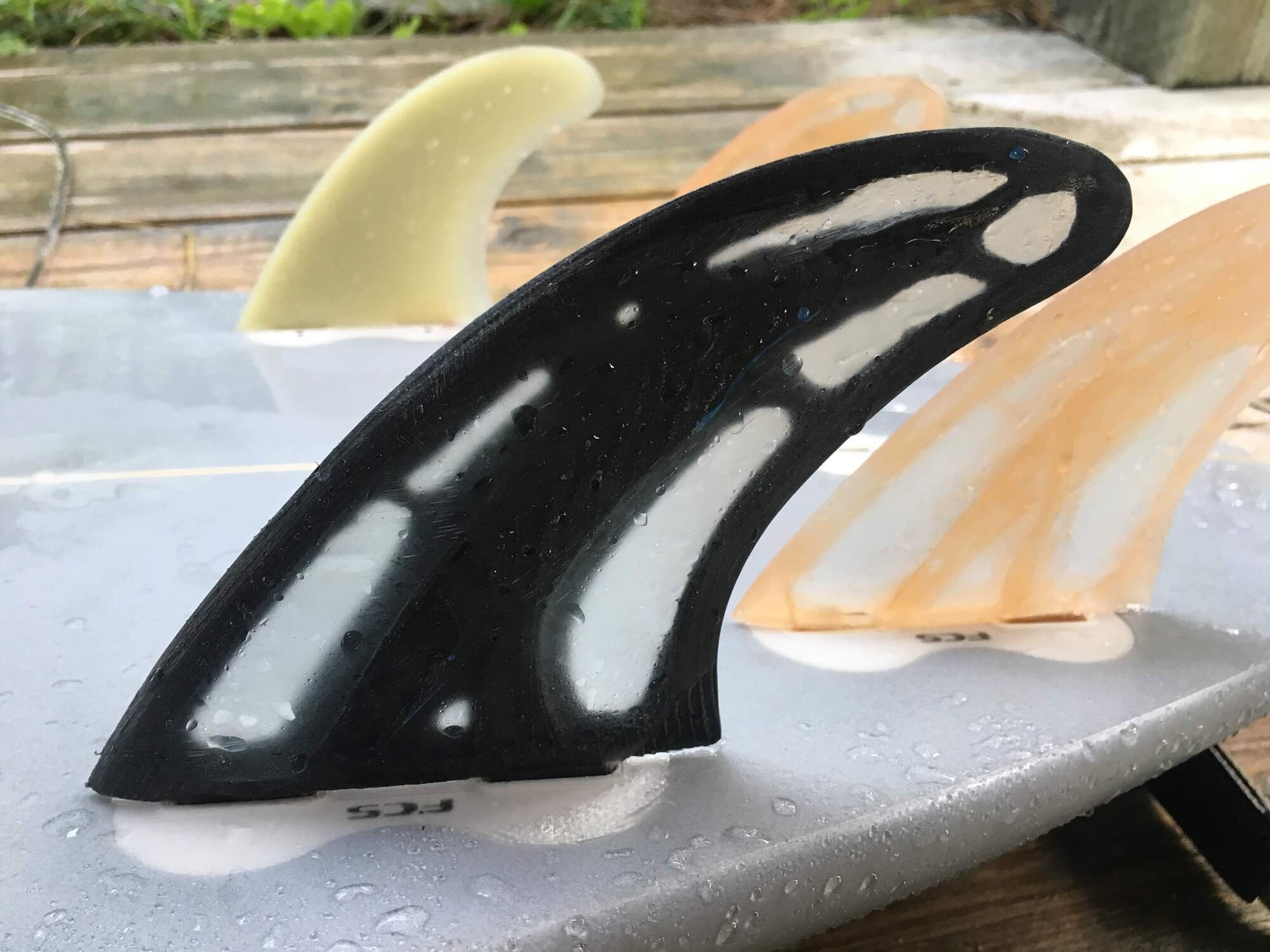
Fins
08/19
Skills utilized:
CAD (Fusion 360, Generative Design)
3D Printing
Composite Layup
Silicone Mold Making
Necessity is the mother of invention. I broke the fins on my surfboard and I needed new ones. It didn't take too long for it to dawn on me that fins are much too unnecessarily expensive. They run for 70 to 80 dollars a piece, but they're nothing but resin and a little fiberglass (occasionally some carbon fiber or some other exotic material). It made no sense not to make my own. I had a 3D printer, epoxy, and fiberglass, so I gave it a shot.
All of the fin varieties. From furthest to closest: stock fin, molded fiberglass fin, molded fiberglass fin, CarbonX and epoxy fin
Design and Manufacturing
I built the frame in Fusion 360 off of a traditional thruster shape, for different fin box types. It seemed like a a perfect opportunity to test Fusion's generative design software, to minimize the fin's mass while maximizing stiffness. I wanted to see if I could create a fin that is more responsive and quick in the water.
I used two methods of actually creating the fin:
3D printing the shape for molding with fiberglass/epoxy
printing with CarbonX filament (nylon filament infused with carbon speckles) before filling directly with epoxy
The latter version was surprisingly promising. It required little post-processing after the print and performed very well in the water. I'd ultimately like to have a fully functioning fin straight off the bed, with zero post-processing. I could do this by utilizing a dual extruder printer loaded with one stiff material (like CarbonX) for the frame and another lighter material (like Ultimaker's Breakaway) to fill in the voids.
Original prototype
Molded Fin
Printed Fin
Concept test with PLA and Breakaway filament for varying material properties








